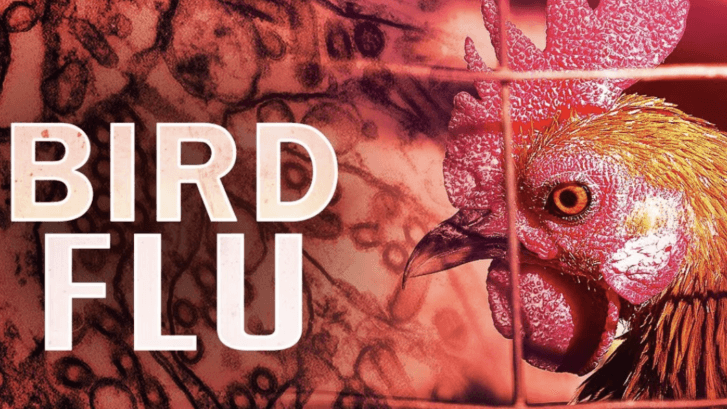Should You Worry About Catching Bird Flu?
Since the outbreak of the novel coronavirus, SARS-CoV-2, we’ve all learned a lot more than we ever wanted to know about viruses and how they work, including how they mutate and how they can spread from animals to humans.
So the recent widespread outbreaks of bird flu have made some people a bit anxious, mainly because it has been reported in a number of mammals.
Our concierge primary care doctors in Jupiter want to explain why you shouldn’t be overly concerned, although there is an element of risk. Here’s what scientists are saying.
Background
According to the Centers for Disease Control and Prevention (CDC), although avian influenza A, popularly known as “bird flu,” viruses usually do not infect people, “there have been some rare cases of human infection with these viruses.”
Infected birds shed the virus through their saliva, mucus, and feces. Bird flu can transmit to humans when a virus from one of these sources gets into a person’s eyes, nose, or mouth, or is inhaled, either from unprotected contact with infected birds or with surfaces contaminated with these viruses.
Some infections in humans, however, haven’t been traced directly to this type of transmission—in other words, no one knows how these “very rare” cases happened. That means some cases may have passed from human to human.
But historically, other types of bird flu have been responsible for several flu pandemics in America’s history, including the devastating H1N1 flu pandemic in 1918-1919, which killed 50 million people worldwide. (The current strain is Type A H5N1, which is not related.)
Recent Outbreaks
The current H5N1 flu virus was first identified in 1959 and can be found in wild birds in all 50 states, along with backyard flocks in most states, including one in a backyard flock in Florida last month, according to the CDC.
In the last year, 58 million birds were slaughtered because of the H5N1 bird flu. In addition, it began transmitting to mammals, including hundreds of wild sea lions in Peru and a farm of minks in Europe. The U.S. Department of Agriculture (USDA) also reported last month that the virus has been detected in skunks, bears, a raccoon, and red foxes.
Most of these mammal infections were probably stand-alone cases in which the mammal ate an infected bird, Jürgen Richt, professor, and director of the Center on Emerging and Zoonotic Infectious Diseases at Kansas State University, told USA Today.
The exception could be the October mink outbreak, he said, in which the virus transmitted from mammal to mammal. And because humans have never been exposed to H5N1, we don’t have any immunity to it—just as we didn’t to the SARS-CoV-2 coronavirus.
“If this virus has mammalian adaption and can transmit between mammals, humans are immunologically naive . . . and humans are mammals,” Richt said.
Tedros Adhanom Ghebreyesus, director-general of the World Health Organization (WHO), said last month that avian influenza’s spillover to mammal species must be monitored closely, but that the risk to humans remained low for the moment.
“But we cannot assume that will remain the case, and we must prepare for any change in the status quo,” he said.
Low Chance
Still, most virologists aren’t yet alarmed, because the virus would need to mutate in a certain way in order to spread to humans.
“It’s a series of events, each of which is fairly improbable,” Anice Lowen, a virologist and associate professor at Emory University School of Medicine, told NBC News.
“This is why I say the risk to humans is presently low,” she said. “The evolutionary barriers are high. It’s a numbers game,” she added, meaning the large numbers of outbreaks around the world are in the virus’s favor, but it would need to undergo a complicated string of mutations to be able to pass to humans.
Nevertheless, the mink farm infestation caught scientists’ attention, even though none of the workers at the farm became ill.
CNN reports that researchers found multiple mutations of the virus in the minks, including one that made it better at replicating in mammals.
“But it’s when it starts to spread from one mammal to the next mammal to the next mammal, it’s in those environments where we think it’s most likely that it will pick up these changes that allow us to switch hosts, and that’s why we get concerned,” Richard Webby, an infectious disease researcher at St. Jude Children’s Research Hospital in Memphis, Tennessee, told CNN. Webby is also the director of WHO’s Collaborating Centre for Studies on the Ecology of Influenza in Animals and Birds.
Staying Safe
Of course, we can’t predict the future, and as we saw with COVID-19, viruses have a way of getting out of hand.
So the CDC recommends a few precautions, such as never handling a dead bird without gloves and a mask.
Songbirds don’t (yet) appear affected, nor do such wild birds as crows or pigeons, so backyard birders don’t need to worry. And the CDC says it’s safe to eat poultry and eggs that are properly handled and cooked.
“The chances are not zero that you could get this, and anything you can do to further reduce that risk is a good thing,” Webby told CNN.
“But you probably really have to work hard to be infected with this virus,” he said.

